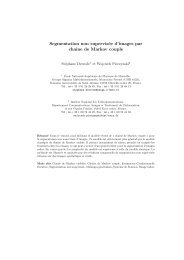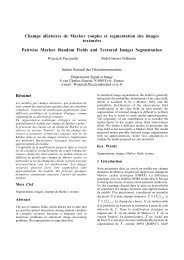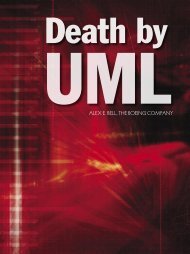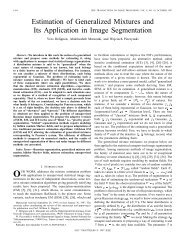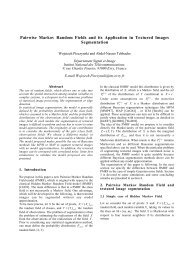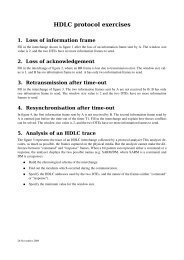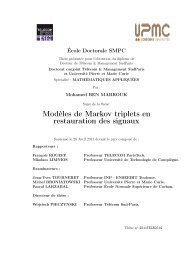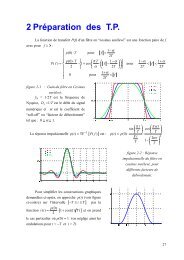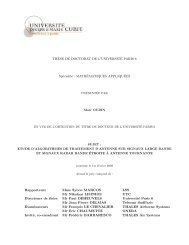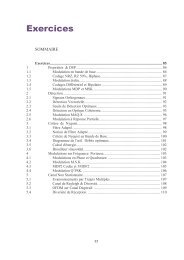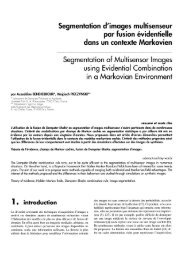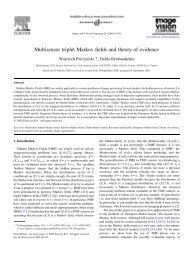Software Reuse In Final Year Projects: A Code of Practice Contents
Software Reuse In Final Year Projects: A Code of Practice Contents
Software Reuse In Final Year Projects: A Code of Practice Contents
You also want an ePaper? Increase the reach of your titles
YUMPU automatically turns print PDFs into web optimized ePapers that Google loves.
• improves the quality <strong>of</strong> the s<strong>of</strong>tware that students produce.We acknowledge that any code <strong>of</strong> practice will obviously restrict the way in which s<strong>of</strong>tware can be developed.Furthermore, such a code will almost certainly be too restrictive in the sense that there are sure to be specificrequirements for some system that would be impossible 5 to meet in the time-frame <strong>of</strong> a project if the code <strong>of</strong>practice is enforced, but otherwise could possibly be met. For this reason we propose that exceptional cases bedealt with by the project supervisor (see section 5 for details).The fundamental requirements for the code <strong>of</strong> practice are that it is: simple to understand, apply andenforce; consistent with wider plagairism policy; and as fair as possible to all students. We will return to theserequirements in the final section <strong>of</strong> this report.<strong>In</strong> order to guide the formulation <strong>of</strong> the code <strong>of</strong> practice, we propose that concrete examples <strong>of</strong> acceptableand unacceptable forms <strong>of</strong> reuse be examined. These examples are not intended to be complete. The exampleswere chosen because they represent the most common forms <strong>of</strong> reuse that we have witnessed in final yearprojects (both acceptable and unacceptable). As such reuse has mostly been at the design and implementationstages <strong>of</strong> development, we focus our examples on these levels <strong>of</strong> abstraction. However, the lessons to be learnedare applicable to the reuse <strong>of</strong> all s<strong>of</strong>tware artefacts.We chose Java as the modelling language used to build the s<strong>of</strong>tware artefacts (models) in our examples. Thischoice reflects our students’ s<strong>of</strong>tware modelling experience, where the majority are most comfortable workingwith object oriented programming languages, in general, and Java in particular.2 Unacceptable <strong>S<strong>of</strong>tware</strong> <strong>Reuse</strong> — why we need a policy<strong>In</strong> this section we explicitly identify — through a single, simple piece <strong>of</strong> Java — a number <strong>of</strong> unacceptable ways<strong>of</strong> reusing other peoples’ s<strong>of</strong>tware. The types <strong>of</strong> reuse in the example also illustrate bad engineering practicewhen reusing your own 6 s<strong>of</strong>tware. Such reuse is common in s<strong>of</strong>tware engineering because the construction<strong>of</strong> most models is incremental, where some, or all, <strong>of</strong> the model/code in a previous increment is reused in afollowing increment. Although the reuse <strong>of</strong> your own code in the way illustrated by the example in this sectionis not explicitly forbidden, we do recommend that you follow our guidelines for acceptable forms <strong>of</strong> reuse, evenwhen reusing your own code!2.1 The Original <strong>S<strong>of</strong>tware</strong> — a realistic example<strong>In</strong> this subsection we introduce a s<strong>of</strong>tware artefact/model, in the form <strong>of</strong> Java source code, which forms thebasis <strong>of</strong> discussion about unacceptable forms <strong>of</strong> reuse. Note that, like much <strong>of</strong> the code that is reused bystudents, this artefact was not designed for reuse!Let us now examine what this code does and how it may be reusable. Firstly, we note that the code consists<strong>of</strong> 2 classes: Example1 and <strong>In</strong>tArray. The Example1 class appears to be a simple test driver for the <strong>In</strong>tArrayclass. By running the code, and through examination <strong>of</strong> the sample execution which is provided as a comment5 The impossibility may also be due to the nature <strong>of</strong> the project - if it explicitly requires ad-hoc re-use then it is clear that thecode <strong>of</strong> practice cannot be followed. <strong>In</strong> situations like these, it should be the responsibility <strong>of</strong> the project supervisor to guide thestudent through such s<strong>of</strong>tware engineering bad practice.6 We do not address the question <strong>of</strong> ownership or <strong>In</strong>tellectual Property in this report. We use the notion <strong>of</strong> your own code torefer to code you have written yourself; <strong>of</strong> course, you may or may not actually have ownership over it.3



